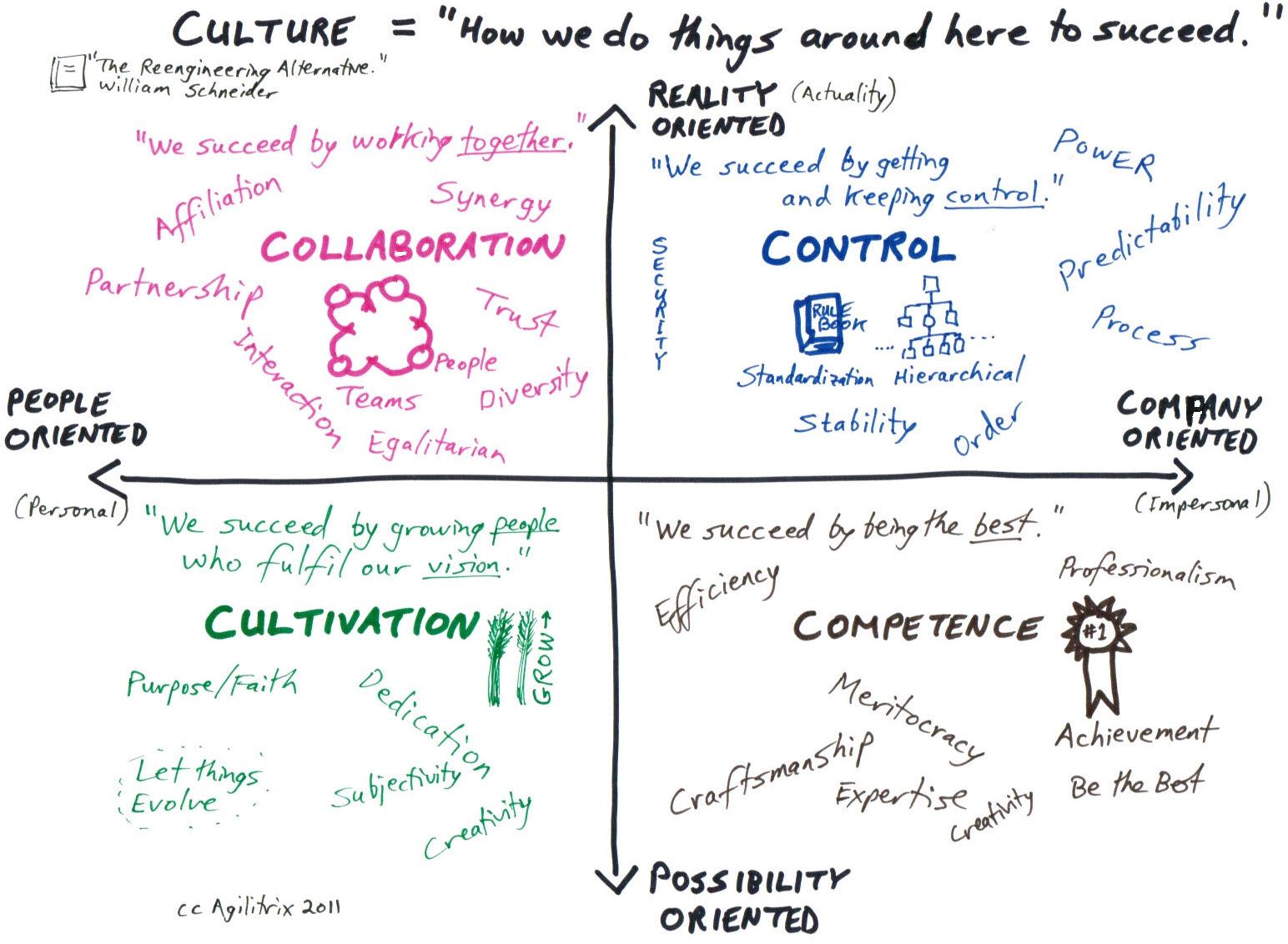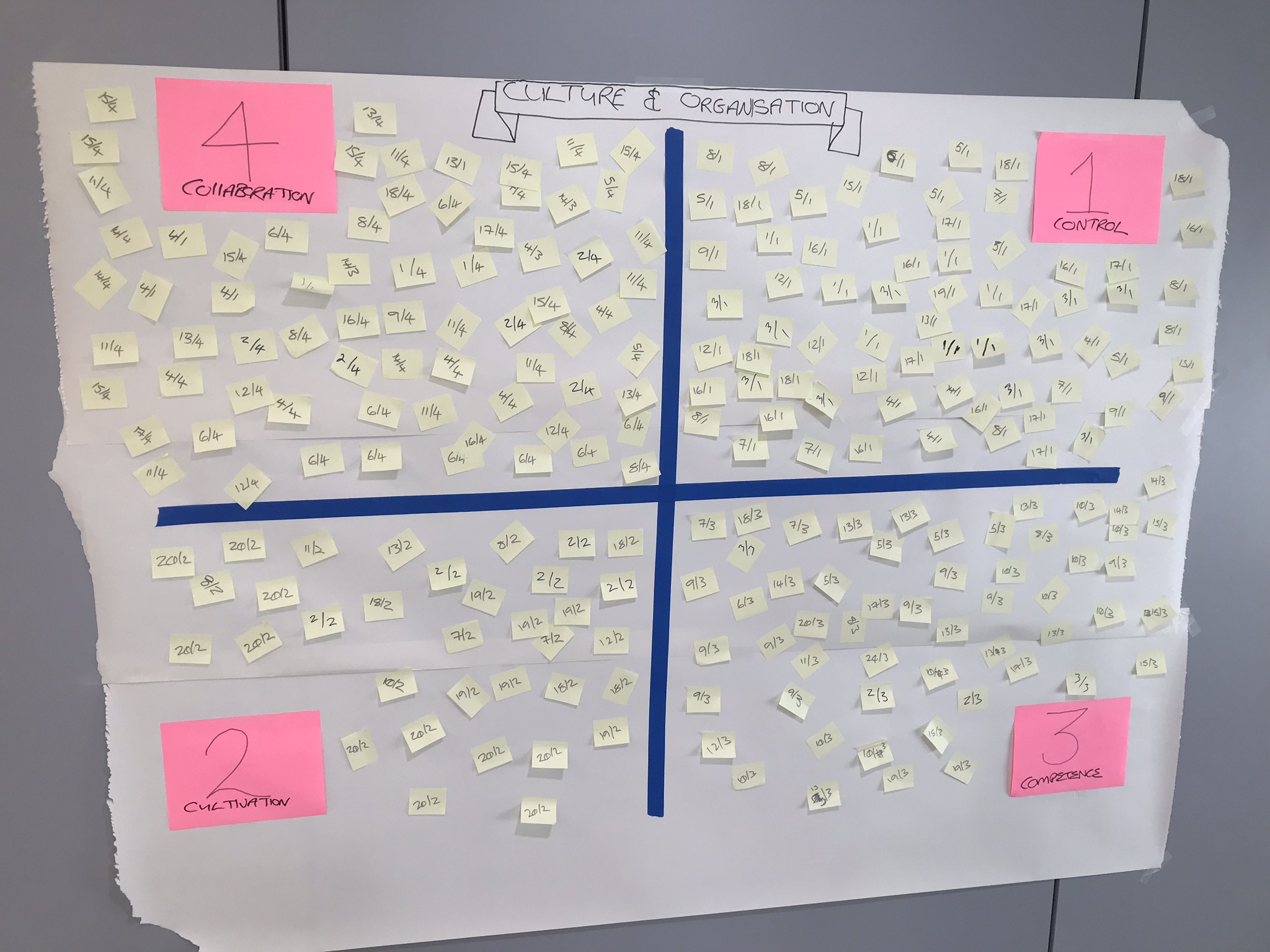What is the Schneider Model?
The Schneider cultural model isn’t a new approach (it has its origins in the mid 90’s) but it’s relevant today. When applying technical and process changes as part of a transformation, this activity provides the means of assessing the current culture and how effective these changes may be.
The Schneider Model identifies the primary, underlying culture which shapes the organisation. There are 4 main types: - Control - Cultivation - Collaboration - Competence
This activity helps determine which is the prevalent culture in the organisation you are working with and helps to understand how to ensure that technical and process changes are effective.

By determining the prevalent culture, the best approach to implement change or manage development. A Control organisation will take change top-down, whilst a Collaboration culture will need a more bottom up approach.
Why use it?
Whilst technical solutions can be developed in a Lab or in a detached environment, it’s eventual goal is to be used in the main part of the organisation. Understanding the underlying culture within the organisation helps you understand what methods you should use to make sure that it’s effective.
Related Activities
Who do you need?
- To facilitate the face-to-face session you need an experienced practioner as well as a recorder taking notes.
- From the organisation being assessed, you need as many people as possible ideally from as many different parts of the organisation. This should be senior managers, managers as well as individual contribution.
Customer Example
During a recent DevOps workshop, Schneider’s model was used to understand where the Participants believe their organisation ‘sit’ within the model. A Blank quadrant was drawn on a large white board with numbers in each quadrant without them being told what each quadrant represented. We then when through the 20 questions and asked them to place a small post-it on the number which best represented their perception of the organisation.

Total Selected Items: * Control: 73 * Collaboration: 69 * Competence: 55 * Cultivation: 34
The result is fairly inconclusive: the company is largely on the spectrum of control - collaboration that demonstrates a command led organisation but able to transition due to the high level of collaboration.
Although the results seem slightly inconclusive, it does get customers thinking about the culture within the organisation.
Suggested Time
- 20 minutes for each online survey response.
- 2-3 hours for a full interactive, face-to-face session with a larger group.
Difficulty
- Facilitator: Medium, you need to understand the model and read / review the reference material. It can be like “hearding cats”!
- Participants: No prior experience required
Facilitation Materials Needed
You can do the assessment in two ways: - use the online form and send to individuals in the organisation, before reviewing and presenting the results - run the survey in a room and get people to respond to the questions interactively
Online Survey
There is a Google Form with the original questions. Make a copy of this and then share with the organisation being assessed.
Interactive Session
- Large room, free of clutter and access to large whiteboard. If possible, remove all chairs from the room.
- Stickies (preferably a wide variety)
Process Phase
At any time, but ideally at the start of a project.
External References
There are a number of good resources on the subject, including Schneider’s original book
The Reengineering Alternative: A plan for making your current culture work
Sahota’s discussion on the Laloux culture model, something he’s used after assessing Schneider with respect to Agile adoption.
Article on using Schneiders Model for open source adoption
A Survey Monkey version of the survey